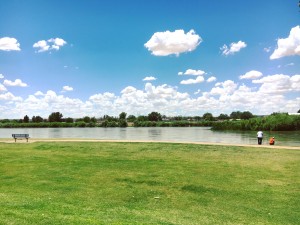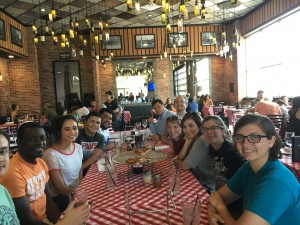My last week in El Paso was a bit hectic to say the least. Interestingly enough, the CDI was creating a more salinated solution rather than the expected desalination, and the system wasn’t getting anywhere near to producing drinkable water. First, we tried rinsing the electrodes for an extended period of time in case of super saturation, which appeared to work at first, but the electrodes still wouldn’t remove a sufficient amount of ions or dump them quickly enough. Then, we switched the carbon electrodes with a new set just in case we were nearing the end of the electrodes’ lifespan, but the result was more or less the same. Next, we tried both increasing and decreasing the concentration of the feed salt solution, trying to make the conductivity peaks more distinct, but that also didn’t seem to have much effect. At the suggestion of Dr. Walker, we tried to test the system for the presence of a short circuit, which could explain the electrode’s lack of absorption; however, this proved to be much more difficult than expected because of the presence of water in the system. Before leaving on Friday, we tried to use air to push any remaining water out of the system in order to accurately test for a short circuit, but we couldn’t be sure that the system was completely dry. All we knew was that when a meter was connected, it indicated that our system was short circuiting.
On Thursday, I took a mini-road trip with a two other interns in the lab up the Rio Grande River, collecting water samples for one of the intern’s summer project. I’d only ever seen the Rio Grande down by the most southern tip of Texas, so it was interesting to travel to New Mexico and see how different it was. We went up to Elephant Butte and then made our way back down to El Paso, stopping about 13 times at different points of the river, some of which were not as accessible as others..
It was definitely tough leaving on such an indefinite note, even more so because it felt as if our project had just begun. I’m sure that I’ll keep in touch with Seye over the next couple of months and I’m excited to hear about his progress in the system’s automation and his growth in understanding about capacitive deionization in general, but I’m sad that I cannot fully accompany him on that journey. I never could have imagined that El Paso would be so dear to me at the end of this internship. Saying goodbye was difficult, but I know that just means that I was lucky enough to have a meaningful experience in which I had the opportunity to meet a whole group of wonderful, intelligent people that give me a reason to come back one day.







